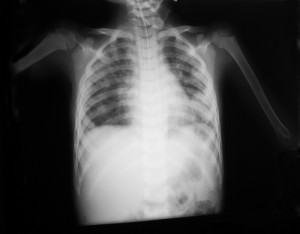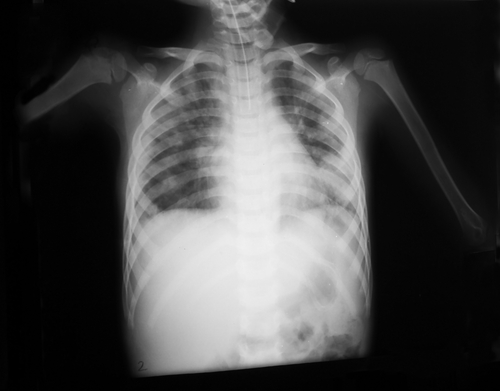 A new study entitled “Impact of Pretreatment Interstitial Lung Disease on Radiation Pneumonitis and Survival after Stereotactic Body Radiation Therapy for Lung Cancer” published on Journal of Thoracic Oncology by Dr. Nami Ueki from the group of Dr. Masahiro Hiraoka at the Department of Radiation Oncology and Image-applied Therapy at Kyoto University’s Graduate School of Medicine. In this study, the researchers investigated the impact of pre-existing radiological interstitial lung disease (ILD) condition on the incidence of radiation pneumonitis (RP) and clinical outcomes after stereotactic body radiation therapy (SBRT) for stage I non-small-cell lung cancer (NSCLC).
A new study entitled “Impact of Pretreatment Interstitial Lung Disease on Radiation Pneumonitis and Survival after Stereotactic Body Radiation Therapy for Lung Cancer” published on Journal of Thoracic Oncology by Dr. Nami Ueki from the group of Dr. Masahiro Hiraoka at the Department of Radiation Oncology and Image-applied Therapy at Kyoto University’s Graduate School of Medicine. In this study, the researchers investigated the impact of pre-existing radiological interstitial lung disease (ILD) condition on the incidence of radiation pneumonitis (RP) and clinical outcomes after stereotactic body radiation therapy (SBRT) for stage I non-small-cell lung cancer (NSCLC).
Interstitial lung disease (ILD) is a group of diseases that cause scarring and stiffing of the tissue and space around the air sacs in the lungs leading to a decrease in the gas exchange processes. In lung cancer patients, the incidence of ILD is higher than in the common population as well as tobacco smoking is a general risk factor for lung cancer and ILD patients. There are some cases of lung cancer patients with ILD that are not good candidates for surgical therapy, therefore stereotactic body radiation therapy (SBRT) may be an alternative acceptable therapy for early-stage NSCLC patients. The SBRT uses highly developed techniques to deliver a targeted and focused radiation dose to a tumor to prevent the growth locally and restricted the damage of the adjacent healthy tissue.
In this study, the researchers evaluated the optimal treatment for early-stage lung cancer patients with ILD and analyzed the frequency of radiation pneumonitis and the clinical outcomes in 157 patients that were submitted to SBRT alone for stage I NSCLC. Among the recruited 157 patients, 20 patients had a pretreatment ILD condition. The authors found that the presence as well as the severity of ILD condition was a risk factor that significantly increased the cumulative incidence for symptomatic and severe radiation pneumonitis. Although in the ILD positive group the overall survival tendency seemed to be diminished, it was not statistically significant, which may be due to the ILD condition. Moreover, there were no differences in disease or local progression rates in patients with ILD when compared to the patients without ILD.
[adrotate group=”3″]
“Our results suggest that the impact of ILD on radiation pneumonitis depends on the preexisting severity of the ILD findings and clinicians should be cautious when considering SBRT for those with significant ILD findings,” said the authors in a press release. “However, other than radiation pneumonitis, life-threatening complications after SBRT are rare. Thus, if the severity of ILD and the risk of radiation pneumonitis are carefully evaluated, SBRT is a curative-intent treatment option for those with early-stage NSCLC and pretreatment ILD.”
Finally, the authors concluded that the pre-existing ILD was a significant risk factor for symptomatic and severe radiation pneumonitis thus the prescreening for ILD conditions would be an important prerequisite for the planning of SBRT due to the risk of developing radiation pneumonitis.

